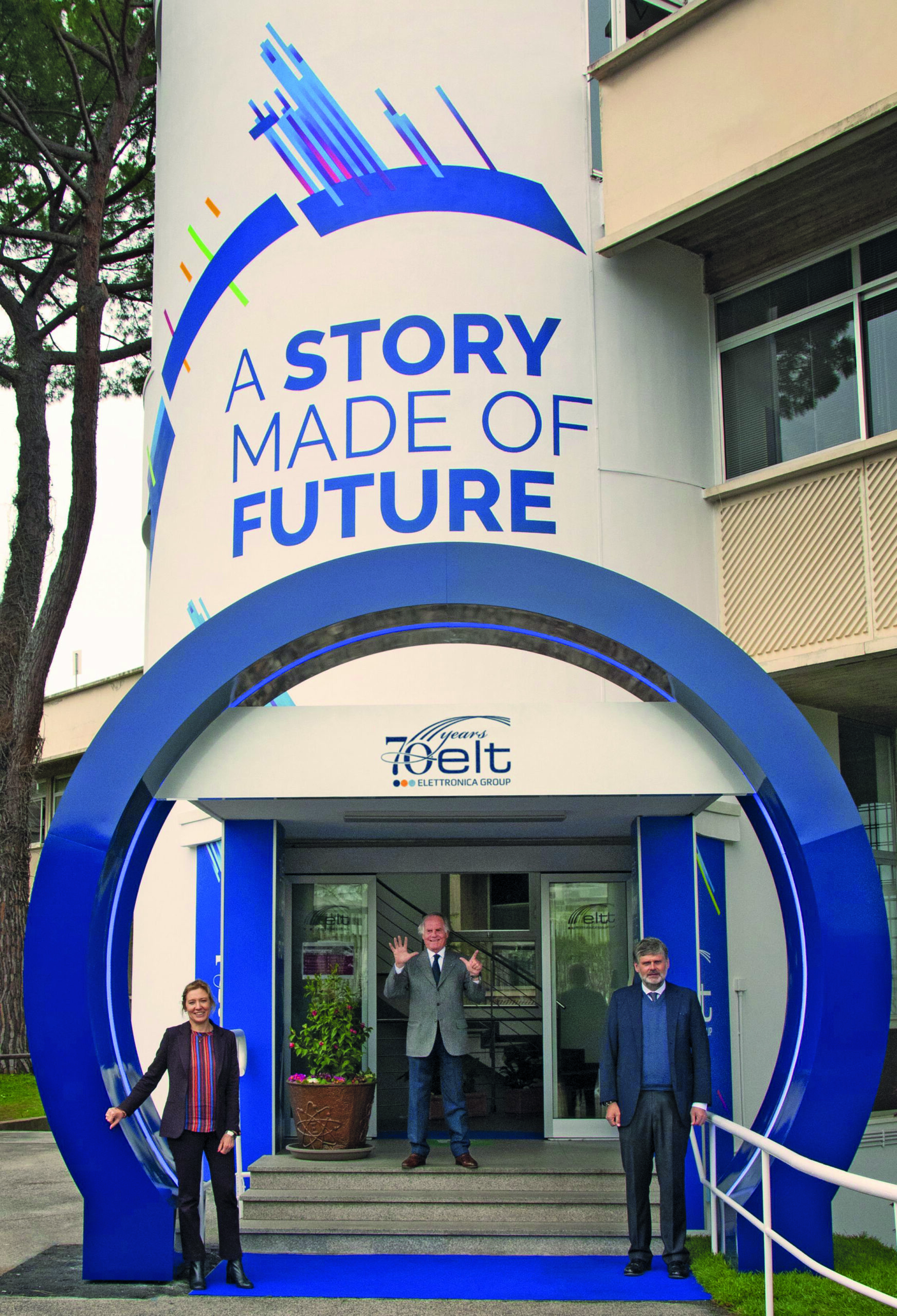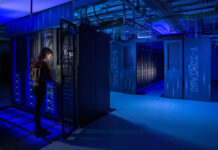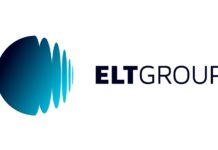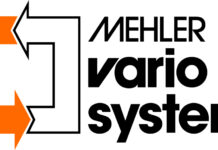As a leader in cyber and electronic warfare with 2,700 systems supplied to over 28 nations, the Italian company Elettronica’s systems are deployed for a variety of missions. This includes strategic surveillance, self-protection, Sigint, electronic defence and operational support for airborne, naval and ground applications. Elettronica Group boasts a strong record of collaboration on all key modern platforms such as the:
- Italian PPA
- the EUROFIGHTER TYPHOON
- the NFH-90 helicopter
- the Italian and French ship HORIZON class frigate
- FREMM
- a wide range of projects in the Middle East and Asia.
ESD had the opportunity to talk to Domitilla Benigni, CEO and COO of Elettronica Group.
ESD: This year, Elettronica celebrates its 70th anniversary. Can you provide a brief historical review on how the company has developed during that period?
Benigni: Our company was founded in 1951 to bring Italy into the field of Electronic Warfare (EW); a field that did not exist at that time in our country. Now, 70 years later, we are the only Italian company dealing exclusively with EW and we are one of the few companies globally to have made it their core business.
Since our foundation, we have grown from 25 to over 1,000 employees worldwide. We have opened five representative offices stretching from the Middle East to Asia, including an office in Brussels. We have established a company in Germany (Elt GmbH) which has specialised in homeland security for the past 40 years. We have also founded Cy4Gate, our cyber security and cyber intelligence company. This has allowed us to become a robust group with integrated defence and security expertise.
More than 30 governments around the world trust our systems. However, participation in major European defence programmes has been crucial to grow our engineering and industrial acumen. To this end, we have played a major role in pan-European defence projects like the TORNADO and EUROFIGHTER TYPHOON combat aircraft, the FREMM and PPA class frigates and patrol vessels and the NH-90 helicopter.
In recent years, we have focused heavily on research and development. This helps us retain our position as a centre of excellence, focusing on sovereign technologies that support national and European strategic autonomy. For example, we are a design authority for the TYPHOON programme and we invested early researching solutions for hybrid threats like malicious drone use and cyber attacks. It is our inclination to anticipate future events that led us to choose the motto “A story made of future” which epitomises our anniversary.
ESD: What are Elettronica’s core capabilities today? What does the distribution of these capabilities across your international subsidiaries look like? Are there individual competence centres? What percentage of your staff works in R&D?
Benigni: Our core business still focuses on electronic defence in the radar band, implemented through solutions like ESM (Electronic Support Measures), ELINT (Electronic Intelligence), RWR (Radar Warning Receivers) and ECM (Electronic Countermeasures). It is this historical competence that underscores our recognition as a centre of excellence in our niche. Since the 2000s, solutions in the electromagnetic domains of infrared and communications have been added to these core capabilities. In addition, by sharing expertise with our Cy4Gate affiliate, Elettronica has developed competencies and operational capabilities in the cyber domain, particularly where the electromagnetic spectrum is used as a vector.
Cy4Gate has enriched our security solutions, but our subsidiary Elt GmbH had already paved the way, particularly with homeland security solutions such as MUROS, the Multirole Operation Support Vehicle, which can be used to assist in the security protection and management of large events and public spaces. More recently, in addition to demands for logistical support for our products, we have added training activities through our EW Academy. This allows us to transfer the skills necessary for the optimal use of our products to the end user.
ESD: Artificial Intelligence is one of the buzzwords in today’s industrial arenas. Can you elaborate on the subject?
Benigni: Artificial Intelligence (AI), as well as Machine Learning, are enabling technologies for our products and processes. High-tech applications have undergone great diffusion and growth, especially in the military domain. However, I think it is right to open a debate at the European level on the limits of AI, because in operational scenarios we cannot ignore the “human in the loop”. Humans remain indispensable not only in software applications but also in engineering, because an ingenious solution is always the product of the human brain.
ESD: What are your most important programmes at present, both in Italy and internationally?
Benigni: Elettronica will plant more towards non-EU markets in the coming years. At the same time, I must admit that we imagine a future marked above all by the great European defence programmes that we see as the only way for European affirmation on the international stage. We are currently talking about the TEMPEST, a pan-European advanced undertaking that revolutionises the very idea of military aircraft as we know them. This sixth generation combat aircraft will trigger a significant leap forward in terms of technology and mind-set regarding the concept of European integrated defence.
ESD: With the Defence Multi-Year Planning Document 2021 – 2023, the Italian Government recently released a new budgetary plan for funding its military. Which programmes contained in the document constitute challenges and perspectives for Elettronica?
Benigni: The most recent defence plan has several funding chapters. The one we are specifically interested in relates to the TEMPEST. Moreover, I can mention the C-27 PRAETORIAN fixed-wing gunship, NH-90 tactical transport helicopter, AMV DORIA (a warship for the Italian Navy), EH-101 medium-lift utility and naval support helicopter upgrade, the Defence Cloud, and new Offshore Patrol Vessels for the Italian Navy.
ESD: What are the most important challenges and perspectives on the global defence market?
Benigni: The challenges that lie ahead were the subject of the conference held on our 70th anniversary, dedicated to the future of the world of defence.
Defence, more than any other sector, depends both on geopolitics and technology. In this interaction, it is technology that dictates the timing and logic of geopolitics. The effects of digitisation have been disruptive on defence. Traditional operational scenarios have been replaced by the Internet of Battlefield Things (IOBT). The IOBT is a system of connections between devices, sensors and weapon systems, platforms and soldiers that will shape tomorrow’s conflicts and which will see cyber playing a central role. The market will be occupied by companies that have very early on looked into this evolution, where the boundaries of security are increasingly blurred and where cyber resilience has become essential.
ESD: What do you expect the company and its capability portfolio to look like ten years from now? Are there things on the drawing board that current and possible future clients should be interested in?
Benigni: Our future roadmap starts from the awareness of the growing role of the electromagnetic spectrum and the dominance it will assume in light of the digitalisation affecting the defence domain. For the same reason, we have been radically transforming our value proposition. We design our systems in an integrated and netcentric way to be ready for the platforms of the future like TEMPEST and its successors.
Our systems and operations are increasingly focused on the software layer. We are constantly researching in order to anticipate threats so as to launch new product ranges. The latest includes our ADRIAN mini- and micro-drone defence system, our Tactical EW Suite (TEWS) for border surveillance and protection and the new systems for unmanned and conventional submarines. In terms of our technology roadmap, we have moved from Gallium Arsenide to Gallium Nitride. This provides greater efficiency and higher performance to our systems and we are working with the Quantum Cascade laser. Obviously, all our products are secure by design. Security is built in from the outset to guarantee cyber resilience.












